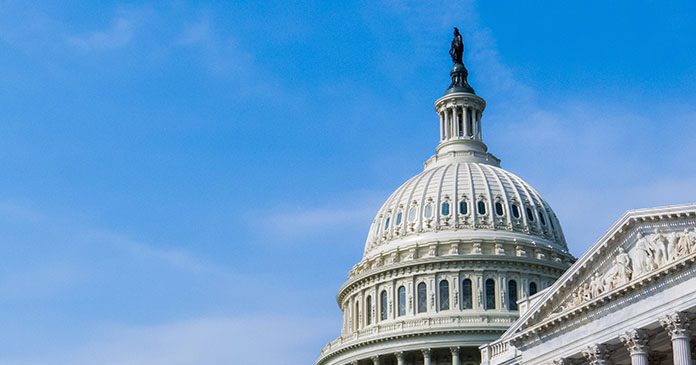Nearly 700 builders from across the nation converged on Capitol Hill today for the National Association of Home Builders (NAHB) 2019 Legislative Conference to urge their lawmakers to support policies that will increase the production of quality, affordable housing and keep the housing recovery moving forward.
“With housing affordability near a 10-year low, we are sending a loud and clear message to members of Congress that there is an urgent need to implement innovative solutions to ease the nation’s affordability woes and enable more families to achieve homeownership or have access to suitable rental housing,” said NAHB Chairman Greg Ugalde, a home builder and developer from Torrington, Conn.
In nearly 300 individual meetings with their representatives and senators, builders discussed the following key housing issues:
- Workforce and immigration. A chronic labor shortage in the housing industry is resulting in higher construction costs, increased home prices and lower economic growth. NAHB urged lawmakers to create a new, market-based guest worker program for the construction sector that will complement ongoing vocational training efforts and help fill labor gaps. Lawmakers were also encouraged to increase funding for job training programs to prepare individuals for careers in home building.
- Trade policy. Builders asked their lawmakers to call on the administration to end tariffs on imports of softwood lumber, steel, aluminum and a wide variety of other goods used by the home building industry that are needlessly raising housing costs. NAHB also called on Congress to ensure swift ratification of the United States-Mexico-Canada Agreement, which holds the potential to lift the housing economy.
- Housing finance reform. Uncertainty about the housing finance system stymies investment and slows the housing market. NAHB called on Congress to pass bipartisan housing finance legislation that would reform the current system and provide certainty to the marketplace, while maintaining an appropriate level of government support for housing in all economic and financial conditions.
- Low-Income Housing Tax Credit. To help spur the production of badly needed affordable rental housing, NAHB urged lawmakers to pass the Affordable Housing Credit Improvement Act. Introduced in the House and Senate earlier this week, the bipartisan legislation would improve the Low-Income Housing Tax Credit by establishing a permanent minimum 4 percent credit floor for acquisition and bond-financed projects. This would provide more flexibility in financing projects and significantly increase unit production.
- National Flood Insurance Program. To continue the stability and growth of the housing market, it is essential that the National Flood Insurance Program (NFIP) remains available, affordable and financially stable. NAHB called on lawmakers to pass a long-term NFIP reauthorization.
- Building energy codes. NAHB urged Congress to require any code or proposal supported by the Department of Energy to have a payback period of 10 years or less.
- Cluster mailboxes. The U.S. Postal Service (USPS) has instituted a de facto mandate requiring mail delivery to cluster mailbox units in new residential developments. NAHB believes any reform effort for the USPS should not be funded by home builders and home owners. NAHB urged House lawmakers to co-sponsor a sense of the House resolution (H. Res. 23) that calls on the USPS to preserve delivery of mail to the home or business.
About NAHB
The National Association of Home Builders is a Washington-based trade association representing more than 140,000 members involved in home building, remodeling, multifamily construction, property management, subcontracting, design, housing finance, building product manufacturing and other aspects of residential and light commercial construction. NAHB is affiliated with 700 state and local home builders associations around the country. NAHB’s builder members will construct about 80 percent of the new housing units projected for this year.













